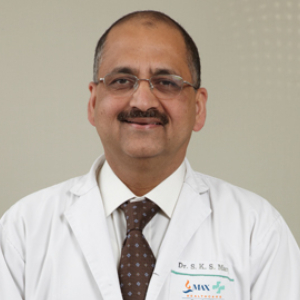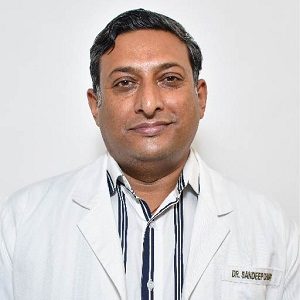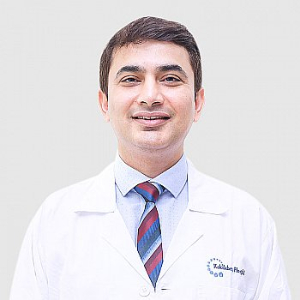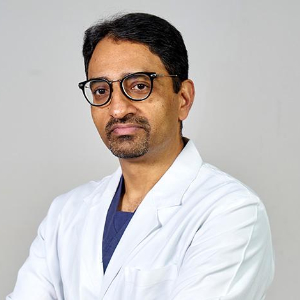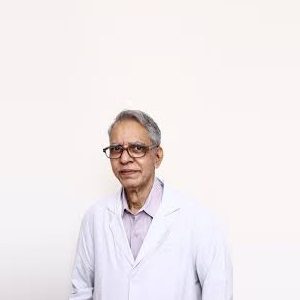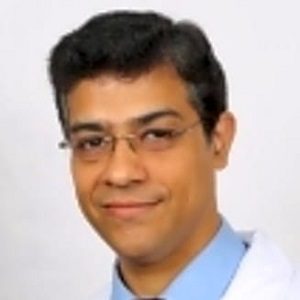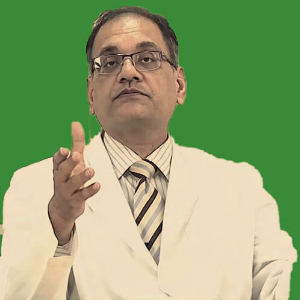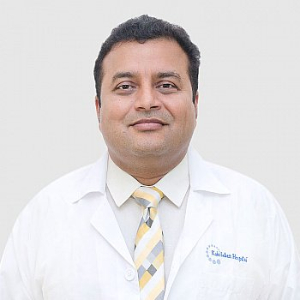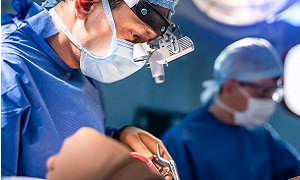Best Doctors in India for Rotationplasty
- Orthopedic Surgeon, New Delhi, India
- Over 30 years’ experience
Profile Highlights:
- Dr. S K S Marya is a highly renowned and acclaimed Orthopedic Surgeon in India and has performed over 15,000 joint replacement surgeries till date.
- He is one of the most experienced orthopedic surgeons specializing in joint replacement surgery of upper and lower limb joints (both primary and revision) and Trauma management according to AO principles.
- His surgical career in numbers is quite high with 3500 simultaneous knee replacement surgeries and over 3000 hip replacement surgeries.
- Orthopedic & Spine Surgeon, Chennai, India
- Over 33 years’ experience
Profile Highlights:
- Dr. Sajan K Hegde is an Orthopedic & Spine Surgeon with 33+ years of experience and is known for performing spine and joint surgeries using the latest technological advancements like minimally invasive sacroiliac joint fusion and cervical artificial disc.
- He has initiated many modern instrumentation systems in India including Cotrel, BAK cages, Harms Mesh Systems, and more.
- Dr. Hedge holds expertise in surgical and non-surgical spine treatments, tackling trauma, et al.
- Orthopedic Surgeon, Gurugram, India
- Over 18 years’ experience
Profile Highlights:
- Sandeep Chauhan is one of the best orthopedic surgeons and an expert in managing complex fractures, even in children, soft tissue injuries, septic arthritis, and osteomyelitis.
- He performs fracture reconstructions; and arthroplasty procedures like surface replacements, cemented and un-cemented THR, Total Knee Replacement, musculoskeletal infections, UKA knee, hip, shoulder, & elbow replacements.
- Pediatric Orthopedic Surgeon, Gurugram, India
- Over 24 years’ experience
Profile Highlights:
- Dr. Sanjay Sarup is a leading Orthopedic Surgeon with over 24 years of experience during which he has been associated with the best hospitals in the country.
- He performs a number of orthopedic procedures that includes surgery for correcting Scoliosis and Kyphosis, Club foot, dislocated hips, and hip deformity since birth among several other procedures.
- Dr. Sarup received his training in orthopedic surgery from leading hospitals in India and UK and holds a Fellowship of the Royal Hospital for Sick Children, Glasgow in Pediatric Orthopedics.
- Orthopedic Surgeon, Mumbai, India
- Over 24 years’ experience
Profile Highlights:
- Dr. Shreyash Gajjar is one of the most accomplished Arthroscopic and Sports Orthopedic surgeons in India and has performed more than 3000 surgeries of which more than 2500 included arthroscopic surgeries.
- Dr. Shreyash Gajjar is the first orthopedic surgeon in India to perform several first surgeries with the use of arthroscopic procedures.
- Dr. Shreyash Gajjar received his training in Arthroscopy, Trauma, and Sports Medicine from the best orthopedic institutions and under the guidance of renowned surgeons in India, UK, and Australia.
- Orthopedic Surgeon, Gurugram, India
- Over 20 years’ experience
Profile Highlights:
- Dr. Subhash Jangid is a renowned Orthopedic Surgeon in India who performs more than 600 joint replacement surgeries annually and helps in the management of patients after such procedures.
- He played a pioneering role in establishing the first Bone Bank in India at the All India Institute of Medical Science in 2002.
- He has been associated with several other prestigious hospitals both in India and abroad and has also been a Visiting faculty at Nnamdi Azikiwe University Teaching Hospital in Nigeria where he trains young surgeons in Arthroplasty.
- Orthopedic Surgeon, Chennai, India
- Over 50 years’ experience
Profile Highlights:
- Dr. Uma Chandran S specializes in orthopedics and is a veteran surgeon at Apollo Hospitals of Chennai.
- He has spent more than 50 years in the field of orthopedics and is believed to be one of the best orthopedists in Chennai.
- He is also known for his expertise in bone replacement surgery, spine movement, fracture treatment, etc.
- Orthopedic Surgeon, New Delhi, India
- Over 22 years’ experience
Profile Highlights:
- Dr. Vibhu Bahl is one of the finest Orthopedist and Joint Replacement Surgeon in India. He has experience of over 22 years in this field.
- Dr. Bahl has successfully performed multiple complex and primary total knee and hip replacements over his career. Besides these, he specializes in computer-assisted total knee replacements. Patients seeking Arthroscopy for shoulder dislocation, degeneration, and repair must consult him.
- Dr. Bahl participated as a Faculty in many Arthroscopy conferences.
- He is passionate about research and has a long list of publications in prestigious national and international journals.
- Orthopedic Surgeon & Spine Surgeon, Gurugram, India
- Over 25 years’ experience
Profile Highlights:
- Dr. Vineesh Mathur is an accomplished and renowned Orthopedic Surgeon in India specializing in Spine Surgery.
- He holds an extensive experience of 25+ years in the field of orthopedics and spinal surgery and has performed over 6000 independent surgeries till date.
- Dr. Vineesh Mathur is highly trained in all kinds of spinal procedures and received training in the procedures from distinguished institutes in India, Spain, Turkey, USA, South Korea, and Denmark
- Orthopedic Surgeon and Spine Surgeon, Mumbai, India
- Over 20 years’ experience
Profile Highlights:
- Dr. Vishal Peshattiwar is a leading Spine Surgeon in Mumbai specializing in Minimally Invasive Spine Surgeries (MISS)
- He has an experience of more than 2 decades in spine surgery and holds the credit of performing over 4000 spinal surgeries to
- He is the first in India to use the MISS technique on a patient with liver failure and Tuberculosis.
- Dr. Vishal Peshattiwar’s most notable case till date was performing a Revision Spine Surgery through MISS on the oldest patient in India.
Best Hospitals in India for Rotationplasty
Rotationplasty
Rotationplasty, a procedure which is used for the treatment of bone cancer (osteosarcoma), in the area of the knee or knee joint. This procedure is generally meant for children less than twelve years of age. In some cases, children who are older or adults might also be able to have rotationplasty.
This procedure is for those patients who would need an above the knee amputation due to the size of their tumor. An important factor is that the nerves can be saved, as they are required for the proper functioning of the ankle or foot.
Purpose
Since children continue to grow till adulthood, this procedure has a benefit, which is that the bone will continue to grow, thus helping the children to stay physically active. The prosthetic leg which is used with the procedure will be fitted and changed as the child grows.
There are alternatives to rotationplasty such as prosthetic knee or amputation. However, this usually limits the patient’s activity and the person is unable to play sports or perform any strenuous activity. When a child uses a prosthetic knee, generally multiple surgeries are required over the next growing years.
Many children who undergo rotationplasty can however continue to be active and take part in physical activities such as soccer, running, running, skiing, bicycling and more.
In addition, rotationplasty also helps to maintain the function of the nerve and blood vessel. Therefore, patients who undergo this surgery don’t suffer from the side effect called phantom limb pain, i.e. pain after amputation where the limb was removed. In order to be a candidate for this procedure, sciatic and other vital lower leg nerves must be intact and working.
Preparation
First, you should discuss with your doctor what you or your child needs to do while preparing for the procedure. Ask whether it is necessary to stop taking any kind of medications such as blood thinners. If the surgery is for you and you smoke, it is important to stop it before the procedure. If there are any changes in your overall health, let your healthcare provider know about this.
If you are interested in this procedure but are not sure if it is the right option for you or your child, then you can ask your doctors if they can put you in touch with other children and/or families who have gone through the procedure. This can help you better understand what you should expect. Generally most families find this step to be extremely helpful in making a decision.
Procedure
During the rotationplasty procedure, the parts of your leg and thigh bones which are having tumors are removed along with some of the healthy bone for obtaining a clean margin. This can include some of the lower part of your femur bone, the knee joint as well as some of the top of your lower leg. The lower part of the leg which includes the foot and ankle will next be rotated 180 degrees to face in a backward direction. This will then serve as a new “knee joint” and then attached to your thigh (femur).
The newly attached ankle joint will then act as your new knee and the backward-facing foot will fit into a custom-fit artificial lower limb.
Recovery
Recovery from a rotationplasty requires a stay in the hospital, which last up to around seven to ten days. Most patients will be going home in a cast. How much time one needs in the cast will depend on how long it takes for the bone for healing. Healing may take longer if the patient is undergoing treatments such as chemotherapy. Once the bones and wounds are healed, the child can be fitted for the prosthesis of the lower leg. During this time, the patient will most likely need a wheelchair or at least a crutch.
Physical therapy is an important part of the recovery process. It can help the patient to learn how he/she can use the ankle joint as a knee joint and how he/she can walk with the new leg/prosthesis. They will also need to learn how to wear and adjust the prosthesis. This generally requires a considerable amount of time and effort from the patient`s side. The length of therapy can vary depending on various factors. As a child who went through this procedure, continues to grow, they will be requiring a new prosthesis and may need short stints of physical therapy with each new prosthesis.
In the case of children, physical therapists need to meet with the patient and family before the procedure so that he/she may evaluate the needs of the patient and what they hope to achieve through the procedure.
Risks
As with any surgical procedure, rotationplasty has few risks and side effects. It is important to note that this is a highly specialized procedure and it is not done very often. Make sure the surgery is done at a reputable hospital or center and performed by a surgeon with experience.
Risks and side effects that are associated with a rotationplasty can depend on the patient as well as the procedure, as some patients might need more extensive reconstruction of blood vessels. General risks might include:
- Reactions to anesthesia/medications
- Infection or wound healing problems
- Bleeding or blood clots
- Injury to the nerves
- Problems with the blood supply to the grafted lower leg
- Inadequate bone fusion which might cause the need for additional surgery

